Planting Grass on Gravel Runways in Alaska
HGA-00340 View this publication in PDF form to print or download.
by Stephen Brown
A Solution for Rock Damage
Practically every Alaska aviator knows all too well that rocks are a leading cause of airplane damage. This is because so many Alaska pilots are forced to take off and land on unpaved, gravelly airstrips. Although there are grass airstrips in Alaska, a majority of runways are located in areas that do not have topsoil and, consequently, support minimal vegetation. Does that mean the aviators who must fly from these airstrips are doomed to a life of rock damage? Fortunately, the answer is no.
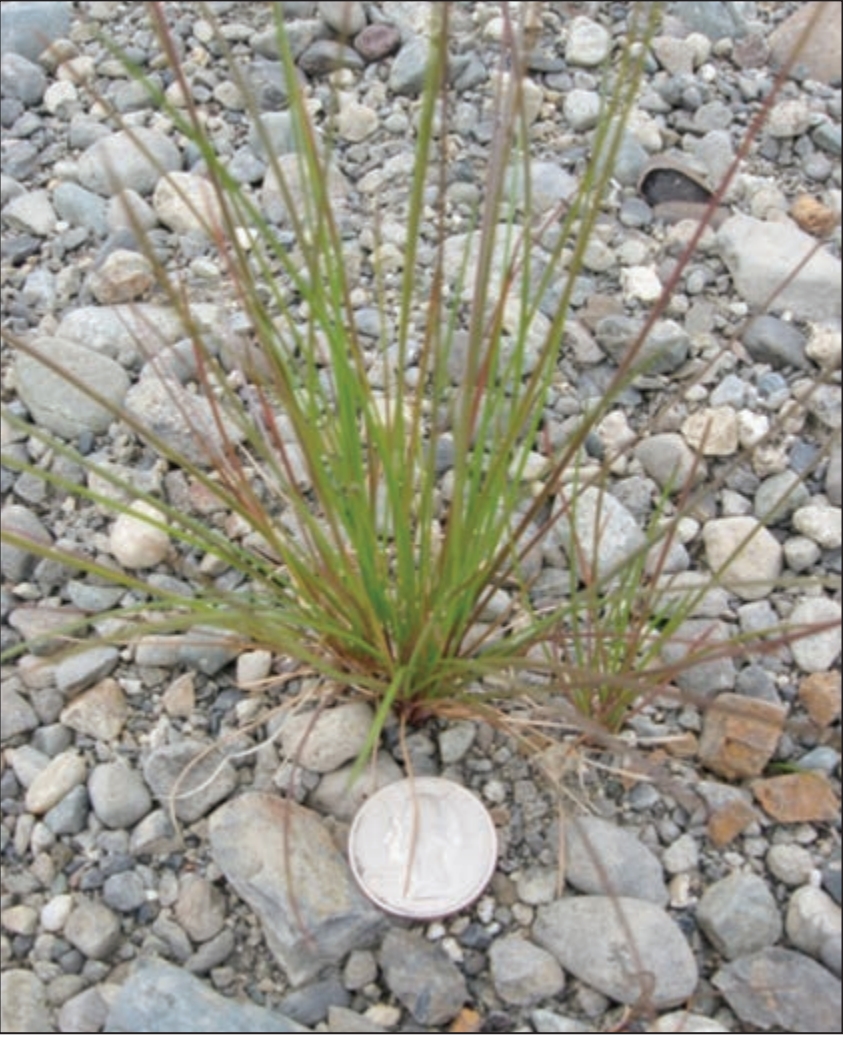
Which Grass?
The first step in grassing a runway is selecting the right grass. Researchers at the University of Alaska Fairbanks Matanuska Experiment Farm and the Alaska Plant Materials Center have identified two varieties of grass that thrive in gravel and can act as anchors for stones — Arctared and Boreal red fescue (see fig. 1). Both of these grasses are relatively inexpensive and can be obtained in Anchorage or Fairbanks.
In August 2008, the University’s Cooperative Extension Service planted a 2,500-foot gravel runway near Talkeetna with Arctared red fescue grass to demonstrate the feasibility of grassing a gravel runway in Alaska. The crowned runway had been newly bulldozed and consisted entirely of gravel (see fig. 2). By June of 2009, there was almost no hint that a gravel runway lay beneath this beautiful stand of grass (see fig. 3).
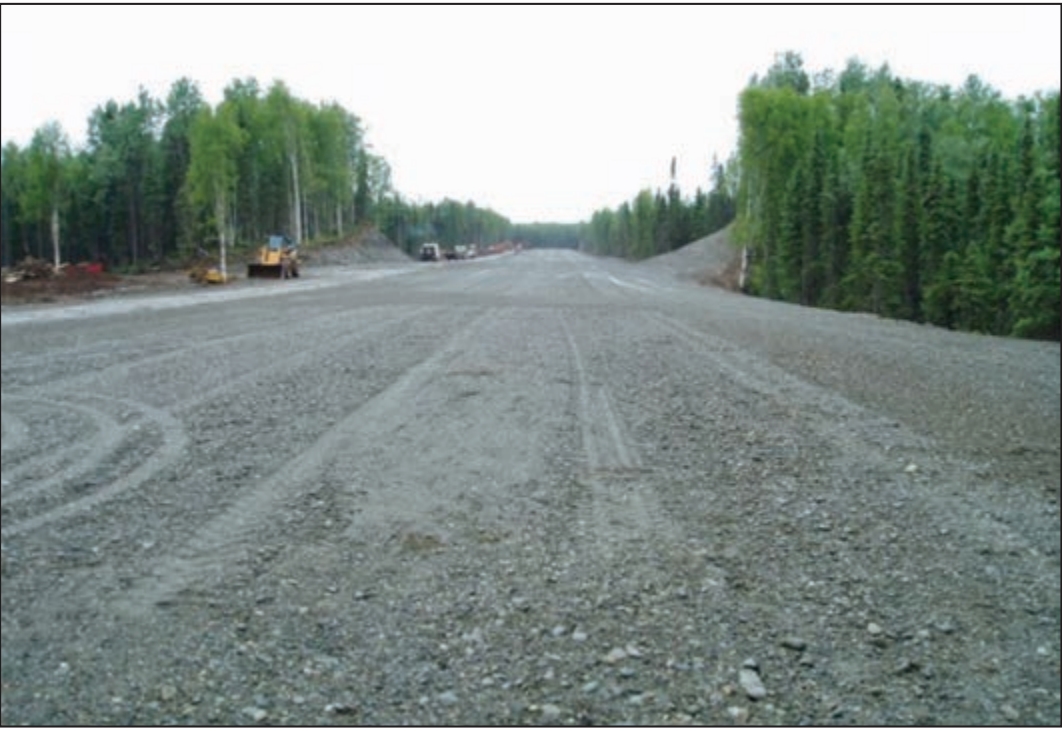
Surface Preparation
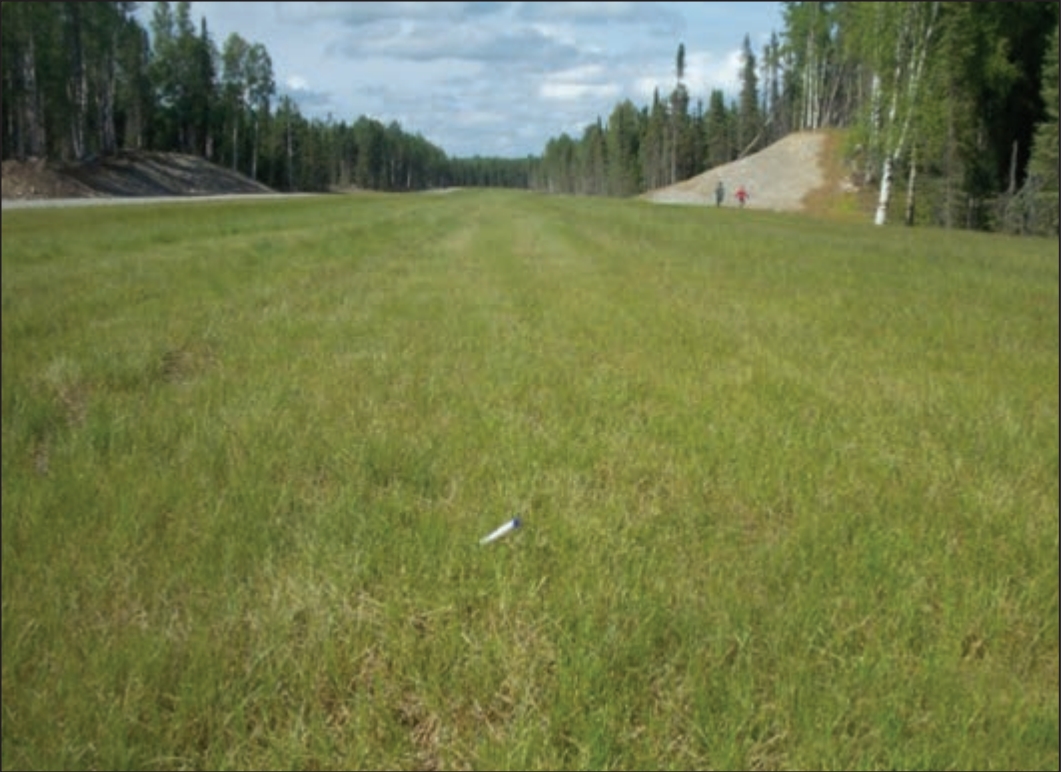
The second step in grassing a runway is preparing the surface. Although red fescue grasses grow well in gravel, there must be some finer material to hold moisture and nutrients for the grass roots. Topcoating gravel with sand is one way to fill in spaces between stones. Figure 4 is a good visual example of a sand/gravel ratio.
Grade and crown the center of the runway to prevent water from puddling and to ensure good drainage, since winter ice can kill grass. If the surface of the runway is compacted at all, it is important to “roughen” the surface so that the grass seed can find tiny cracks and crevices in which to germinate. Dragging a large rake or other implement with teeth can achieve this. Roughening the surface will significantly increase seed germination.
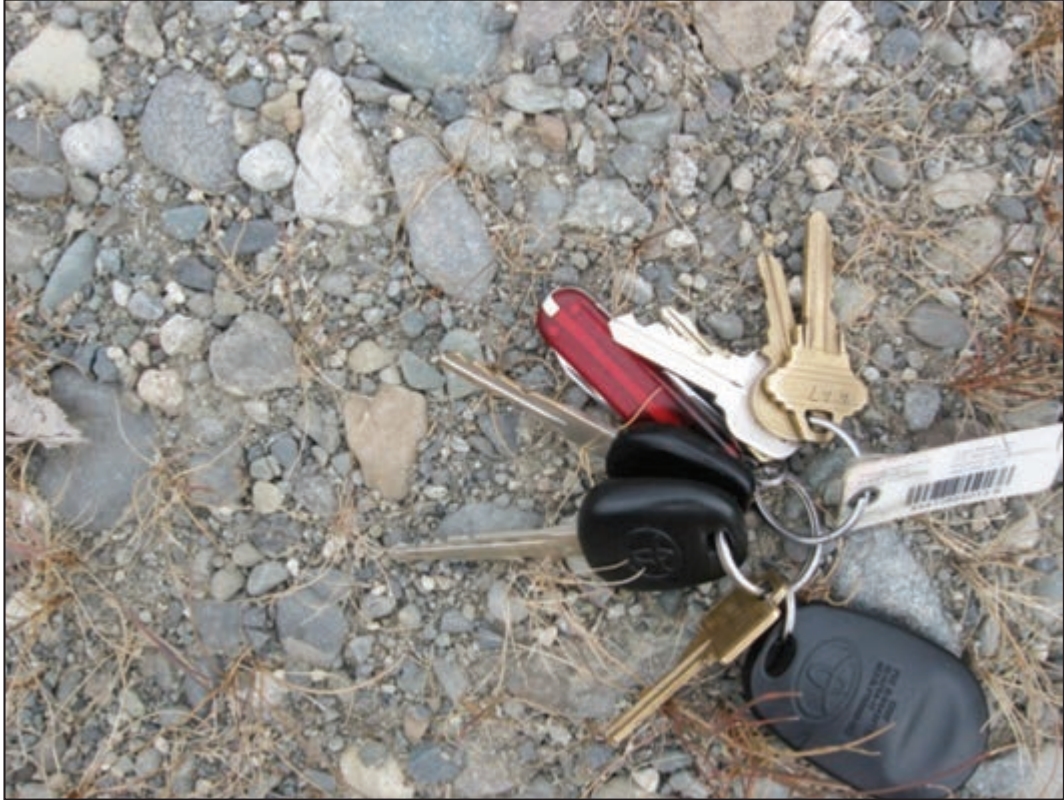
When to Plant
A big consideration in grassing a runway is deciding when to do it. Alaska’s short growing season and often unpredictable rainfall makes this a very important decision. Ideally, you want the first growing season to be as long as possible so that the young plants can establish a strong root system and store nutrients for the winter. This means planting sometime between the middle of May and the middle of June. Unfortunately, this is usually a dry time of year for much of the state. If you have the ability to irrigate your grass, this is the best time to plant. If you do not have access to irrigation, August may be the best month to gamble on sufficient rain. Whichever you choose, the runway must not be allowed to dry out until the seedlings are 1 inch tall and have well-developed root systems.
Soil Testing
The final step before planting the grass is to determine the pH, nitrogen, phosphorus and potassium levels present in the runway by submitting a soil sample to a soil testing laboratory. This can be done through the University of Alaska Fairbanks Matanuska Experiment Farm laboratory or through the lab of your choice. For more information on soil testing, refer to UAF Cooperative Extension Service publications Factors to Consider in Selecting a Soil Testing Laboratory, FGV-00045, and Soil Sampling, FGV-00044.
Soil testing is a very important step and will be the biggest factor you can control for ensuring a successful project. When you receive your results, contact a local Cooperative Extension Service agent to interpret the results and make a fertilizer recommendation for you.
Planting and Fertilization
So, which grass do you choose to seed in your runway, Boreal or Arctared? There are trade-offs and advantages for each grass. Boreal is slightly shorter than Arctared and the seed is a bit cheaper. However, it is not quite as cold-tolerant as Arctared. The general rule of thumb is to plant Boreal south of the Alaska Range and Arctared north of the Alaska Range.
The minimum seeding rate of red fescue grass is 3½ to 4 pounds/1,000 square feet. This is a minimum seeding rate; better results will be obtained by increasing this rate a few pounds. If you have to skimp anywhere in a runway grassing project, don’t skimp on seed.
In the Talkeetna project, a small tractor and a dropseed spreader were used (see fig. 5). A broadcast spreader attached to an ATV works well, too. Purchasing a broadcast spreader for your ATV is probably a good idea because you will likely be applying fertilizer each year from now on. An unfortunate downside to growing grass in gravel is that it rapidly becomes devoid of nutrients and will require annual fertilization.
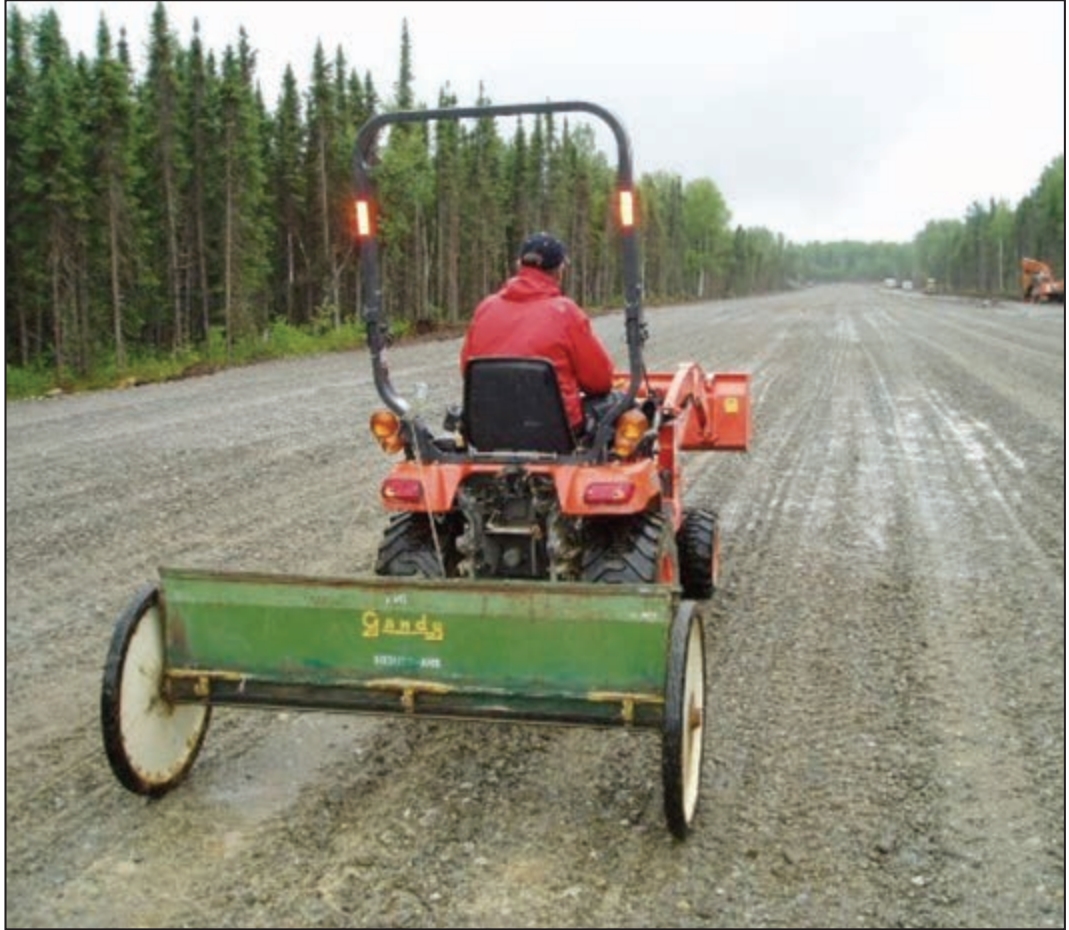
Once the seed is laid, it is the time to fertilize your runway. The fertilization rate should be based on the results of the soil test you submitted to the analytic lab as previously discussed. Once your Extension agent receives your sample results, he or she will contact you and outline a specific fertilization plan for your project. Unless you have very high soil nutrient levels (very unlikely in gravel), you will need to fertilize your seedlings.
Water Needs and Germination
If you can’t count on the rain, you’ll need to devise an irrigation system. The key is to develop a system that delivers the water gently enough not to dislodge the seeds or seedlings. Some runway owners have linked several sprinkler heads together with plastic pipe and moved the system up and down their airstrip as needed. Others have adapted water tank trucks to provide a gentle sprinkler application that is sprayed from the sides of the runway.
It will take seven to 14 days for your grass to germinate, depending upon the temperature. The surface will need to remain moist until the seedlings reach about 1 inch tall and the root system becomes well developed. It is very important to stay off the grass until the seedlings are about 3 inches tall. For many runways, this “stay off ” requirement renders them unusable for aviation during the establishment period. If staying off is not an option for you, consider planting one side of the runway one year and the other side the following year.
Mowing
Mowing is an unfortunate consequence of grassing an airstrip. Deck mowers towed by ATVs are probably the best solution for smaller runways. Ideally, no more than one-third of the leaf blade should be removed at one time. This may prove impractical for some runways because it could mean weekly mowing. Whatever you choose to do, don’t mow the grass lower than 2 to 2½ inches. Runways where the primary users have large tundra tires may not need to be mowed at all.
Weed Control
Weeds will almost certainly find your runway. Some airstrip owners are content to have a runway that seems to be more dandelions than grass, while others can’t tolerate the thought of a single weed. Whatever your weed tolerance, you should be constantly vigilant for exotic invasive weeds that may hitchhike onto your runway by adhering to airplane tires. Herbicides for weed control can be easily found at most stores that sell garden supplies. Herbicides that kill weeds without killing grass are commonly referred to as “broadleaf weed killer.” Examples include 2,4-D, MCPA, MCPP, dicamba and triclopyr. Use extreme care when applying these chemicals and precisely follow the directions on the label. When applying liquid herbicides, be sure to prevent spray drift by applying when wind speeds are less than 3 mph.
References
Tuccio, W.A. 2007. “A Comparison of Turf Management Practices at Turf Runway Airports in the Southeast.” Graduate capstone project, Embry-Riddle Aeronautical University, Fort Walton Beach, Florida.
Wright, S.J. 2008. A Revegetation Manual for Alaska. Alaska Department of Natural Resources, Division of Agriculture.
UAF Cooperative Extension Publications
Factors to Consider in Selecting a Soil Testing Laboratory, FGV-00045.
Soil Sampling, FGV-00044.
Stephen Brown, Extension Faculty, Agriculture and Horticulture
Reviewed September 2021
